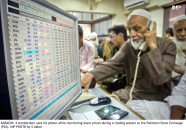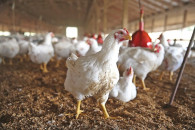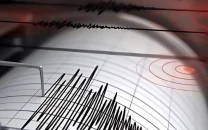New Covid-19 strain inflicts pain on global equities
Concerns threaten to torpedo optimism over vaccine-fuelled rebound in growth

Equities around the world tumbled on Monday, the dollar strengthened and oil prices plunged as concerns about a new coronavirus strain in Britain threatened to torpedo optimism over a vaccine fuelled rebound in economic growth.
On Wall Street, the benchmark S&P 500 stock index fell 1.7%, while the pan-European Stoxx index plunged 2.6%.
In both regions, travel and leisure stocks, which had been expected to be among the biggest beneficiaries of an economic reopening, fell sharply. MSCI’s gauge of stocks across the globe shed 1.55%.
The new coronavirus strain, which is said to be up to 70% more transmissible than the original one, has put some 16 million Britons under tougher lockdowns and prompted several countries to shut their borders to the UK.
Those developments overshadowed news that the US Congress had agreed upon $900 billion in additional fiscal stimulus.
Worries over the new strain lifted the greenback, which had sunk to two-and-a-halfyear lows last week, though it later pared some gains. The dollar index was last 0.11% higher.
On the other hand, the virus concerns as well as the lack of a post-Brexit trade deal ahead of a December 31 deadline weighed heavily on the pound. It was last 1.53% lower at $1.3321. The euro also dropped 0.37% to $1.221.
“The new strain of the coronavirus is really scaring everyone, and we’re seeing buying of the dollar across the board,” said Edward Moya, senior market strategist at Oanda in New York.
Meanwhile, commodities that had been expected to benefit from a growth upswing next year plunged on Monday.
Both Brent and US crude dropped more than 3% while copper fell off the $8,000-pertonne mark it recently scaled for the first time since 2013.
Even so, Emiel van den Heiligenberg, head of asset allocation at Legal & General Investment Management, predicted that expected vaccine rollouts would limit broad market downside.
“A correction is justified but a very strong selloff would surprise us ... because of the vaccine, by next March-April, we should be able to think about normalisation again,” he said.
On Wall Street, the Dow Jones Industrial Average fell 258.97 points, or 0.86%, to 29,920.08, the S&P 500 lost 57.89 points, or 1.56%, to 3,651.52 and the Nasdaq Composite dropped 193.35 points, or 1.52%, to 12,562.29. Volatility in US equities jumped as the indices swooned.
The Cboe Volatility Index, known as Wall Street’s “fear gauge,” hit its highest level since early November.
Safe-haven assets such as German and US government bonds rallied.
Benchmark 10-year US Treasury notes last rose 5/32 in price to yield 0.933%, from 0.948% late on Friday.
The yield curve between the US two-year and 10-year Treasuries, a gauge of growth expectations, flattened slightly. It had risen to its steepest level in almost three years on Friday amid optimism about the stimulus bill.
Gold, which usually rises during times of turmoil, was little changed after falling as much as 1.3% earlier in the session.


















COMMENTS
Comments are moderated and generally will be posted if they are on-topic and not abusive.
For more information, please see our Comments FAQ